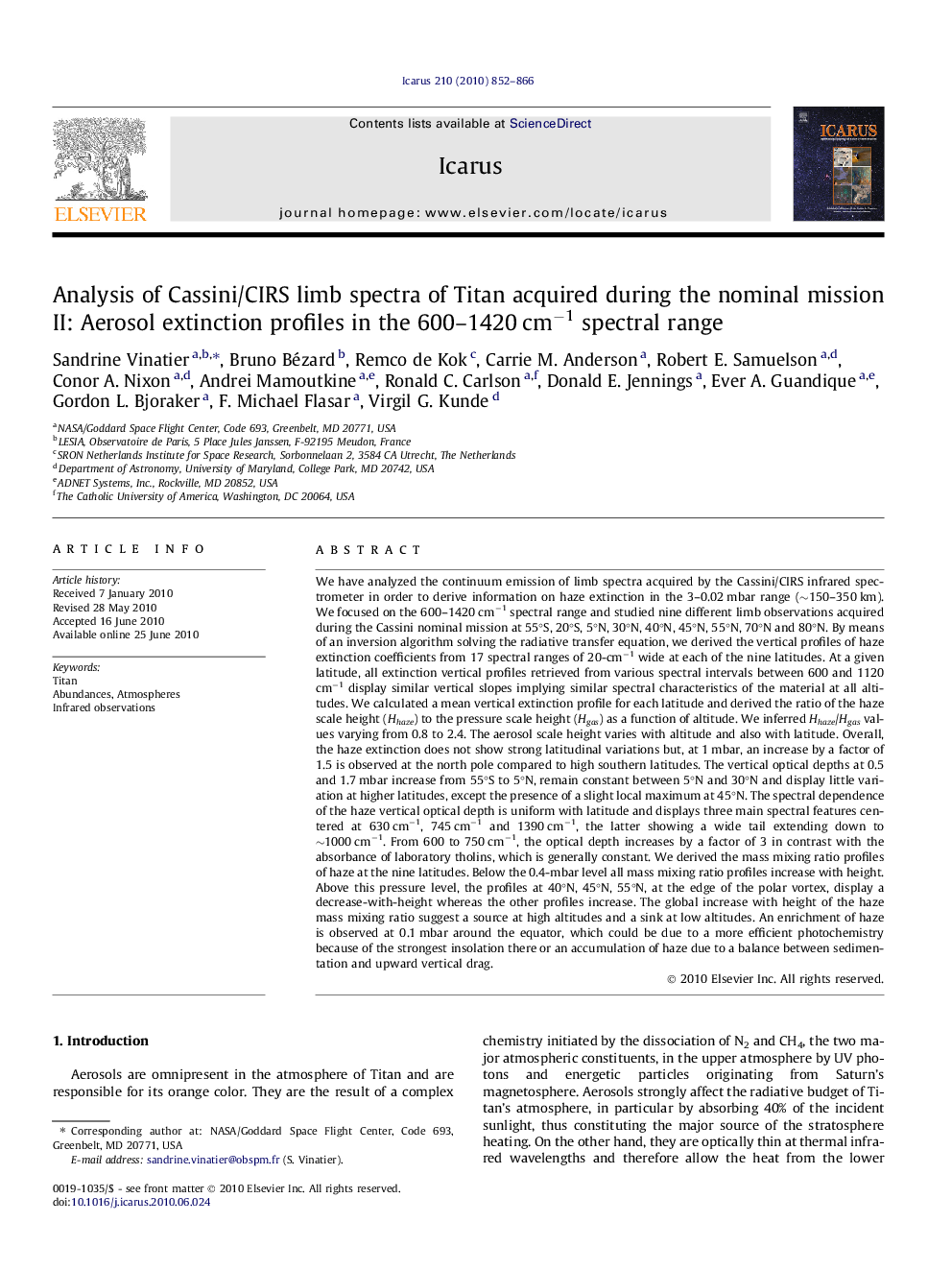| Article ID | Journal | Published Year | Pages | File Type |
|---|---|---|---|---|
| 1773631 | Icarus | 2010 | 15 Pages |
We have analyzed the continuum emission of limb spectra acquired by the Cassini/CIRS infrared spectrometer in order to derive information on haze extinction in the 3–0.02 mbar range (∼150–350 km). We focused on the 600–1420 cm−1 spectral range and studied nine different limb observations acquired during the Cassini nominal mission at 55°S, 20°S, 5°N, 30°N, 40°N, 45°N, 55°N, 70°N and 80°N. By means of an inversion algorithm solving the radiative transfer equation, we derived the vertical profiles of haze extinction coefficients from 17 spectral ranges of 20-cm−1 wide at each of the nine latitudes. At a given latitude, all extinction vertical profiles retrieved from various spectral intervals between 600 and 1120 cm−1 display similar vertical slopes implying similar spectral characteristics of the material at all altitudes. We calculated a mean vertical extinction profile for each latitude and derived the ratio of the haze scale height (Hhaze) to the pressure scale height (Hgas) as a function of altitude. We inferred Hhaze/Hgas values varying from 0.8 to 2.4. The aerosol scale height varies with altitude and also with latitude. Overall, the haze extinction does not show strong latitudinal variations but, at 1 mbar, an increase by a factor of 1.5 is observed at the north pole compared to high southern latitudes. The vertical optical depths at 0.5 and 1.7 mbar increase from 55°S to 5°N, remain constant between 5°N and 30°N and display little variation at higher latitudes, except the presence of a slight local maximum at 45°N. The spectral dependence of the haze vertical optical depth is uniform with latitude and displays three main spectral features centered at 630 cm−1, 745 cm−1 and 1390 cm−1, the latter showing a wide tail extending down to ∼1000 cm−1. From 600 to 750 cm−1, the optical depth increases by a factor of 3 in contrast with the absorbance of laboratory tholins, which is generally constant. We derived the mass mixing ratio profiles of haze at the nine latitudes. Below the 0.4-mbar level all mass mixing ratio profiles increase with height. Above this pressure level, the profiles at 40°N, 45°N, 55°N, at the edge of the polar vortex, display a decrease-with-height whereas the other profiles increase. The global increase with height of the haze mass mixing ratio suggest a source at high altitudes and a sink at low altitudes. An enrichment of haze is observed at 0.1 mbar around the equator, which could be due to a more efficient photochemistry because of the strongest insolation there or an accumulation of haze due to a balance between sedimentation and upward vertical drag.
